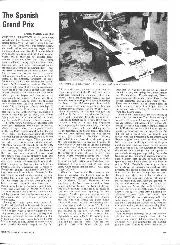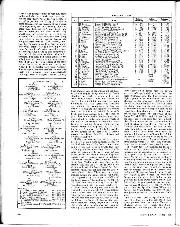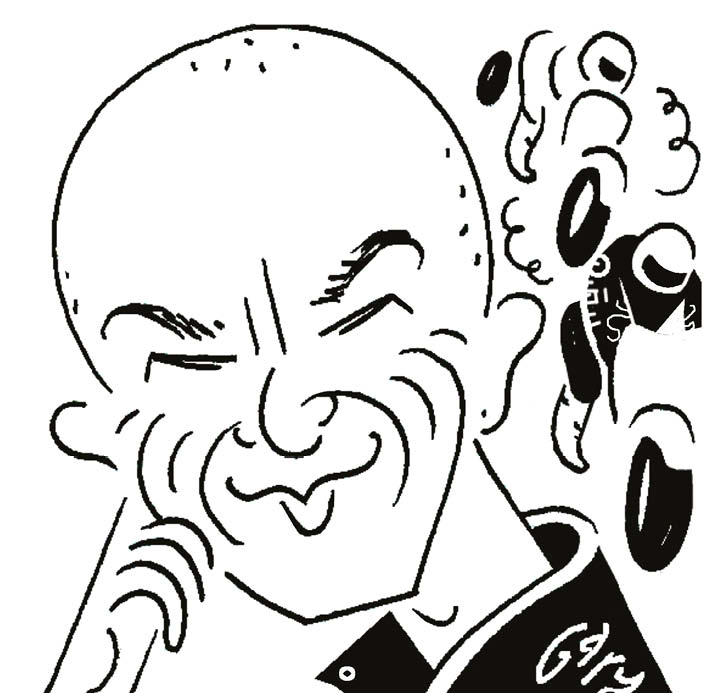

1976 Spanish Grand Prix race report
Qualifying Official practice at a permanent Autodrome like Jarama is fast becoming a simple formality, or at least it should be, for most of the teams were out testing during…

Percy Tait, who has died aged 90, was one of the stars of the days of the globally dominant British motorcycle industry. Tait was a senior road tester for Triumph who rode 200 miles a day, Monday to Friday, then raced the Midland company’s products at weekends, usually without the prior knowledge of its management. Triumph managing director Edward Turner always thought racing a waste of money, unlike his opposite numbers at Norton, who built Norton’s reputation on successes on track.
“All the work was done in secret in a half-disused machine shed behind the Experimental Department shop,” recalled Tait, who joined the company when he was 21 and worked closely with Doug Hele, one of motorcycling’s cleverest engineers.
“Doug had come from Norton where he worked under Joe Craig [who had masterminded Norton’s racing successes before and after the Second World War], so he was always mega-keen on racing,” remembers fellow engineer Norman Hyde, who worked under Hele. “He would do racing work when he wasn’t supposed to, so he tended to be like Nelson putting a telescope to his blind eye: I see no racing bikes. Nearly all the racing was in Britain, giving Percy a ride every weekend, from Cadwell to Oulton.”
Tait was an unlikely star of the 1960s and 1970s, which is better known for its glamorous playboys, like Italian Giacomo Agostini and Londoner Barry Sheene. There was nothing glamorous about Tait or his operation. He looked like a greaser and he revelled in playing the outsider, the fly in Ago’s ointment.
He joined Triumph, initially on the assembly line, after completing his National Service, during which he became a member of the army’s motorcycle display team.
In 1969 Tait scored Triumph’s only grand prix podium (until last year, when the reborn Triumph brand became engine supplier for Moto2). This great result was achieved at the Belgian GP at Spa-Francorchamps, where Tait briefly led Agostini’s MV Agusta, finally taking the chequered flag in second place.
The trip from the factory in Meriden was undertaken in the Experimental Department’s scruffy old Transit van. Tait travelled with two helpers, and none of them were paid, because the factory race team was so unofficial it didn’t even exist to management.
“At first the MV crew refused to allow the Triumph team in”
“The trusty Transit was made ready with an oily rag service and the kipper smell removed – after being in the Isle of Man for the TT races,” recalled Tait’s colleague Les Graham, who was team manager. “The two beautiful race bikes were loaded, plus a couple of hammers and tools, a change of underwear, sandwiches and a flask of tea…”
The Spa weekend didn’t start well, because the motley Triumph crew had been assigned the same pit area as MV Agusta, the Italian brand owned by Count Domenico Agusta.
“At first the MV mechanics could not believe that the tatty Transit was entering the pit of the great and mighty and it was duly refused entry,” Williams continued. “The order of the day then became fisticuffs, so Arthur [Jakeman, the other member of Tait’s crew], who is quite large, showed the Italians his fist, and the trusty van, which I might add was also the hotel, cookhouse and workshop, was in. The MV mechanics moved their beloved machines as far as possible from this new outfit, worried they might catch oil leaks and things.”
You can imagine the look of befuddlement on the MV mechanics when 40-year-old Tait led Ago’s MV four at the end of the first lap of the 500cc GP, especially because he was riding a tuned-up twin-cylinder road bike.
Tait, Hele and the rest of the crew had spent hundreds, probably thousands, of hours transforming their T100, “a below-average road bike”. A standard T100 made 32 horsepower at 7000rpm. By the time Tait got to Spa, Hele’s engine made 53 horsepower at 9500rpm, enough to keep Agostini worried for a couple of laps. Tait’s hard work and crucial input to chassis development also played a part in the T100’s unlikely speed.
Triumph’s attitude to racing changed in the 1970s when it marketed the machine that was supposed to save the once-great name from Japanese competition, the three-cylinder 750cc Trident. Tait raced the Hele-developed triple from Daytona to Le Mans, where he won the 1971 Bol d’Or 24 hour race, partnered with Ray Pickrell. That year Tait also won the British superbike championship. Three-cylinder machines ridden by others also won the 1971 Daytona 200 and the Isle of Man TT for production machines. However, despite its many successes around the world the Trident couldn’t prevent the demise of the British motorcycle industry.
Eventually, Tait went with the flow. When Triumph shut its race team he signed with Suzuki, making the tricky move from road-based four-strokes to prototype two-strokes, most notably the square-four RG500 that took Sheene to 500cc world titles in 1976 and 1977.
Tait retired a few years later after a nasty accident on the Isle of Man. In retirement he became a Suzuki dealer and a champion sheep breeder. This new hobby was a very different world from the motorcycle racing paddock, but Tait wasn’t your average racer.
Mat Oxley has covered motorcycle racing for many years – and also has the distinction of being an Isle of Man TT winner
Follow Mat on Twitter @matoxley